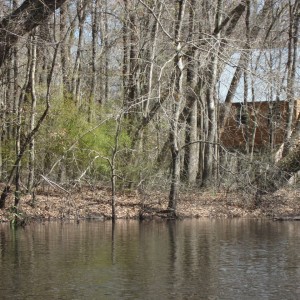Camouflage
Yesterday I paddled a kayak down the Edisto River for ten miles. Another pearl in my string of rivers. It was warm and bright, and bits of green, gold and pink showed up on winter branches of river birch and red maple.
Kayaking the Edisto’s black water is intriguing. The swamps and wetlands it feeds are mysterious and had me constructing paintings in my head. For hours I stared hard at every turn, every overhanging tree and woody structure, searching for ideas for new work. It’s a practice that imitates life. The river’s current carries me so fast I can’t stop to study. Once in a while I will paddle to the edge and grab hold of a limb in an attempt to see the details in a vine or a ripple before I finally yield to the current and move forward, leaving that place behind.
One great pastime on such a journey is listing the wildlife. I used to keep journals of my sightings in the wild. It’s an amazing thing to read my old journal descriptions–watching eight toucans roost, or seals at play–sights that are hard to even imagine when one is back home. Yesterday’s trove included an ibis, a great blue heron, and a swimming beaver who smacked the water with his tail. My friend had a shock when she paddled right up to an overhanging tree where a tree-bark-colored snake slept at about the eye level of a person in a canoe. A perfect small green tree frog who looked like a piece of cool jade jewelry landed right next to my left hand. It took some persuading to coax him back into the Edisto.
We camped in a park situated near a recently decommissioned coal fired power plant. It still buzzed at night with an eerie hum, and in my imagination its abandoned industrial parts looked sinister. We were told there is still a coal ash pond nearby that occasionally leaks into the river. The riverside state park was convenient to recreation however, and the stars the first clear night were spectacular viewed through twisted pine trees, black against the sky. Maybe it was my imagination, but there seemed to be few birds and wild creatures there in the vicinity of the coal fired plant.Perhaps they gravitated to the wilder, quieter land away from that hum.The ten miles we paddled to get from our launch to the power plant were nearly uninhabited. There were a only three or four dwellings on stilts, and during a whole day we saw only two other people–a sunburned woman and man motoring upstream in a small camouflage-patterned skiff.
There was stark contrast between the miles of wild and forested swamp land upstream, and the industrial scars left by the vivisection of the swamp. The humming interstate and the planned and sanctioned desecration of the river were another universe altogether from the clean- running Edisto, filtered by forests, loaded with minnows and birdsong upstream. Sad as it is, my name is on some of this earth’s coal ash. And I have used that interstate highway system to travel thousands of miles.




Recent Comments